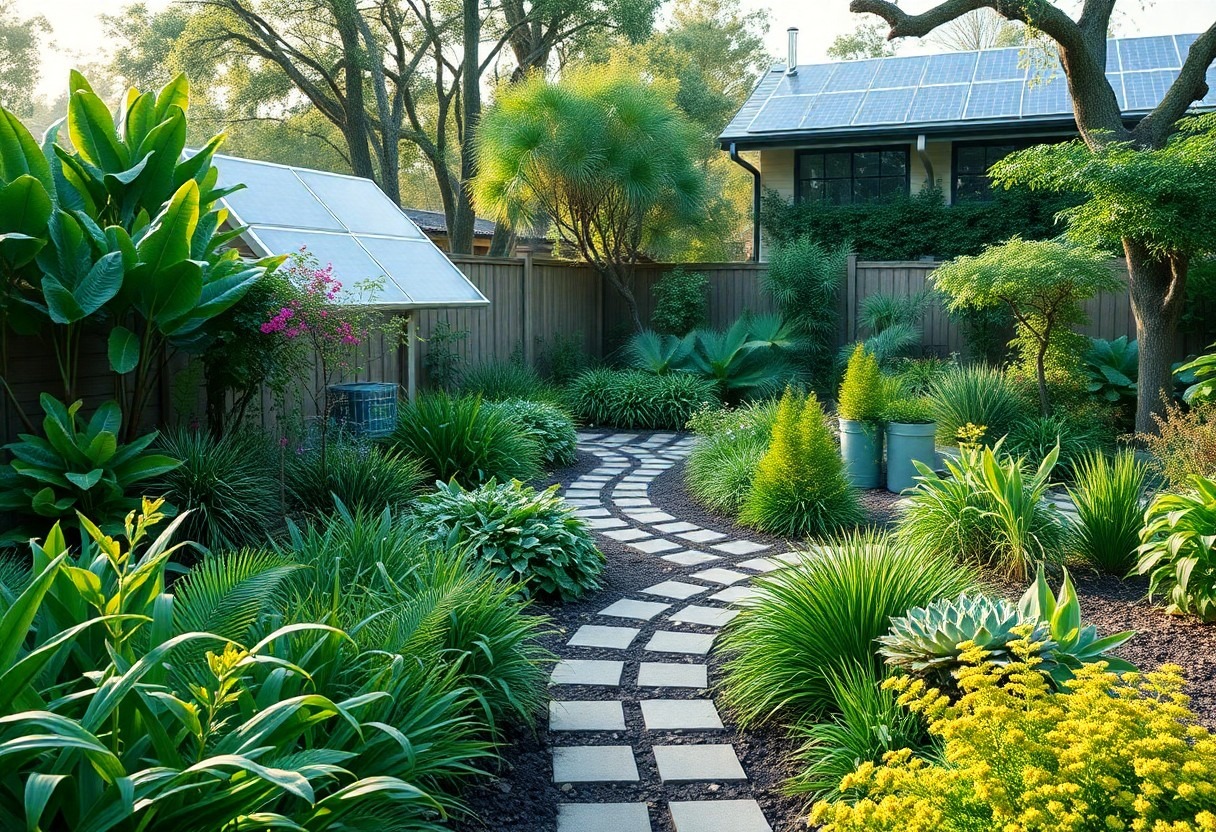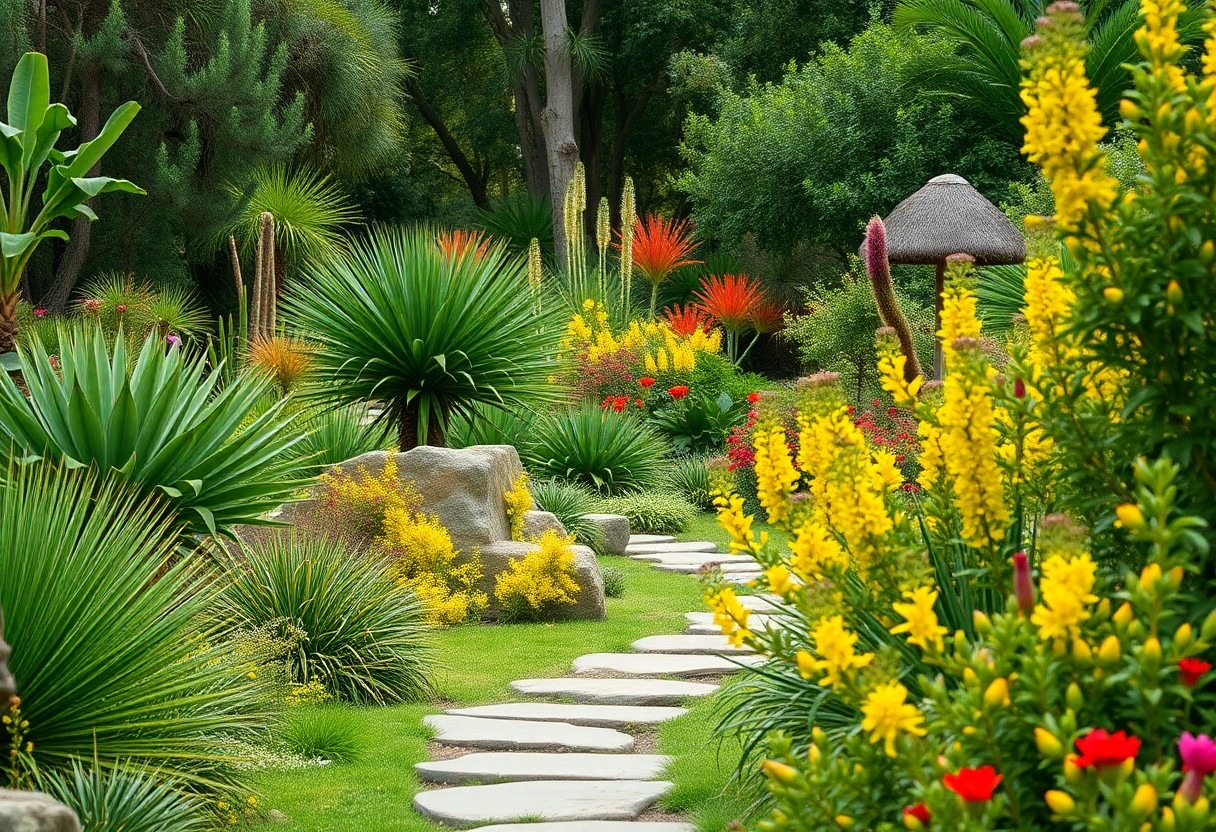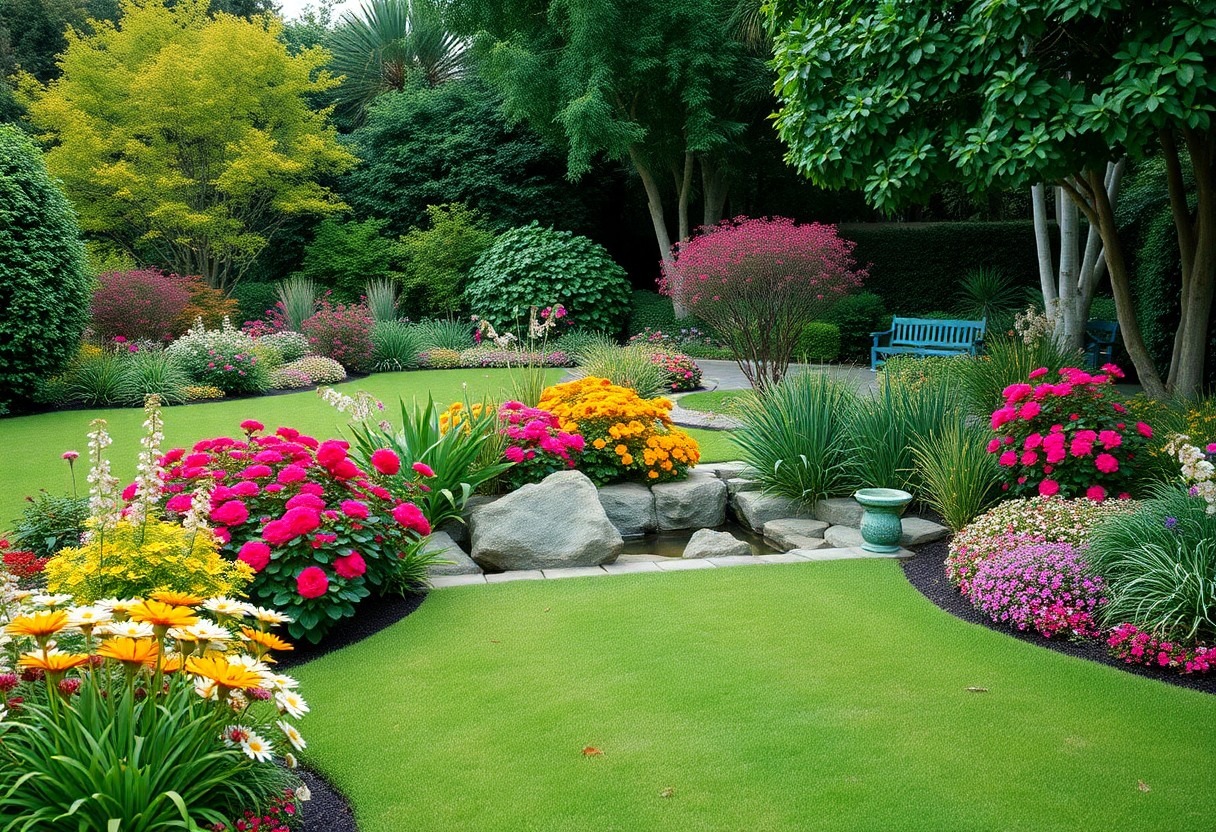Many homeowners in Helensvale want to enhance their outdoor spaces while minimizing environmental impact. This guide will equip you with necessary sustainable landscaping practices that not only benefit the planet but also create beautiful, thriving gardens. You’ll learn to utilize native plants, implement water-saving techniques, and improve soil health, ensuring your landscaping efforts contribute positively to the community. By adopting these practices, you will foster a healthier ecosystem in your yard and promote biodiversity, making your home a greener place to live.
Types of Sustainable Landscaping Practices
The following are the main types of sustainable landscaping practices you can adopt:
| Native Plant Selection | Using local plants that thrive in your area. |
| Xeriscaping | Landscaping that reduces the need for irrigation. |
| Organic Gardening | Gardening without synthetic chemicals. |
| Mulching | Using organic materials to retain soil moisture. |
| Composting | Recycling kitchen and yard waste into nutrient-rich soil. |
Assume that by incorporating these practices, you are contributing to a healthier ecosystem.
Native Plant Selection
There’s a significant benefit to selecting native plants for your landscaping. These plants are adapted to the local climate and soil conditions, making them easier to maintain. They also provide habitat for native wildlife and help preserve the local ecosystem.
Xeriscaping
Xeriscaping is a landscaping methodology that conserves water by utilizing drought-resistant plants. This technique not only enhances your landscape’s beauty but also reduces the overall need for water through informed plant selection and placement.
Plus, xeriscaping encourages the use of efficient irrigation practices and creates a self-sustaining landscape that minimizes maintenance. You can choose from a diverse range of succulents, native grasses, and other drought-tolerant plants to create an attractive and water-efficient garden that aligns with sustainable goals.
Organic Gardening
On the other hand, organic gardening focuses on cultivating plants without the use of synthetic fertilizers or pesticides. This method relies on natural processes to build healthy soil and maintain plant health, ensuring that your garden remains vibrant and productive.
Landscaping with organic methods empowers you to harness nature’s balance, improving biodiversity while protecting your family’s health from harmful chemicals. By using compost, natural pest control, and crop rotation, you can cultivate a productive and eco-friendly garden that supports the environment and produces safe, nutritious food.
Essential Tips for Sustainable Landscaping
Some key practices can enhance your sustainable landscaping efforts in Helensvale. Start by incorporating native plants, which thrive in the local climate and require less water. Consider using organic mulches to suppress weeds and retain moisture. Implementing drip irrigation can save water while still keeping your garden healthy. Finally, practice composting to enrich your soil naturally. Knowing these necessary tips can lead to a thriving, eco-friendly landscape. For more insights, check out A Guide to Sustainable Landscaping Practices – Varsity Inc.
Soil Health Management
Landscaping begins with the foundation of your garden: the soil. Maintaining good soil health improves drainage, supports plant growth, and enhances nutrient uptake. You can achieve healthy soil by testing its pH, adding organic matter, and avoiding chemical fertilizers. Regular aeration will also boost soil structure, giving your plants a robust start.
Water Conservation Techniques
Tips for water conservation in your landscape are vital for sustainability. Implementing methods like rain gardens, rain barrels, and xeriscaping can significantly reduce water usage while keeping your garden vibrant. You can also group plants with similar water needs together to maximize efficiency.
Sustainable water conservation techniques not only benefit your landscaping but also promote ecological health. Installing rain barrels can collect rainwater for irrigation, reducing your reliance on municipal water. Creating rain gardens effectively manages runoff and supports local wildlife. Additionally, selecting drought-resistant plants significantly cuts down on water consumption while ensuring a flourishing landscape. Through innovative practices, you can contribute to environmental sustainability without sacrificing beauty in your outdoor spaces.
Step-by-Step Guide to Creating a Sustainable Landscape
Not every landscaping project has to harm the environment. By following a structured approach, you can create a sustainable landscape that enhances your outdoor space while preserving natural resources. Below is a simple step-by-step guide to help you navigate the process:
| Steps | Description |
|---|---|
| 1. Assess Your Site | Evaluate existing plants, soil conditions, and sunlight exposure. |
| 2. Plan Your Design | Create a layout that incorporates sustainable practices. |
| 3. Select Native Plants | Choose local flora that require less water and maintenance. |
| 4. Install Efficient Systems | Set up drip irrigation and rain gardens to manage water sustainably. |
| 5. Maintain Regularly | Care for your landscape to encourage growth and sustainability. |
Planning and Design
Even when you have a plot in mind, a well-thought-out plan sets the foundation for sustainable landscaping. Consider factors such as climate, soil type, and native plant species that thrive in Helensvale. This ensures a beautiful and practical design that requires minimal resources and maintenance.
Implementation
Guide your project towards success by following through with your design in a hands-on manner. It’s important to source materials that are eco-friendly and to keep your landscape’s health in check during installation. Engage professionals or volunteer for community projects to learn effective techniques.
With a focus on sustainability, you can reduce waste while enhancing the ecological health of your landscape. Utilize recycled materials where possible, and avoid using harmful chemicals in favor of natural alternatives. Pay attention to the layout you’ve designed—ensure plant spacing is adequate to promote air circulation and reduce the risk of disease. The outcomes not only improve your immediate environment but can also positively contribute to the local ecosystem.
Important Factors to Consider
All sustainable landscaping practices in Helensvale hinge on several important factors you need to evaluate. These include:
- Understanding the local climate
- Assessing your soil type and quality
- Choosing appropriate plant species
- Utilizing efficient irrigation systems
- Incorporating organic fertilizers
Knowing these factors will set the foundation for a successful and sustainable landscape design.
Local Climate Conditions
Factors such as temperature, rainfall, and wind patterns characterize the local climate in Helensvale. You must assess how these conditions affect your landscape, influencing your plant choices and irrigation needs. Understanding your area’s seasonal changes allows you to select climate-appropriate plants that thrive year-round and require minimal maintenance.
Soil Type and Quality
Clearly, the soil type and quality are significant for any landscaping endeavor. Different plants require specific soil characteristics, such as drainage rates and nutrient content, to flourish. Assessing your soil can help you make informed decisions about any amendments needed for optimal growth.
Important to note, the health of your soil can dramatically impact plant growth and overall ecosystem balance. Conducting a soil test will reveal its composition, allowing you to identify deficiencies or imbalances. Addressing poor soil quality with the right amendments—like organic matter or mulch—can improve nutrient retention and drainage. Additionally, prioritizing soil health can lead to reduced erosion and a more sustainable landscape that benefits both your property and the local environment.
Pros and Cons of Sustainable Landscaping
To evaluate sustainable landscaping practices, it’s vital to consider both the benefits and drawbacks. Here’s a breakdown of the pros and cons:
| Pros | Cons |
|---|---|
| Reduces environmental impact | Higher initial costs |
| Improves biodiversity | Requires ongoing maintenance |
| Enhances water conservation | Limited plant options |
| Increases property value | May take longer to establish |
| Promotes healthier ecosystems | Knowledge and skill requirements |
Advantages of Sustainable Practices
While implementing sustainable landscaping practices yields numerous advantages, you can expect to see immediate benefits such as reduced water consumption and increased biodiversity. Your landscape will not only become eco-friendlier, but it can also boost your property value. Over time, you’ll witness healthier and more resilient ecosystems as native plants thrive, providing habitats for local wildlife.
Potential Challenges and Limitations
An important consideration is that sustainable landscaping can present some challenges and limitations. You might find the initial costs higher than traditional methods, which can be off-putting. Additionally, the ongoing maintenance demanded by sustainable gardens can be time-consuming, and some native plant options may not suit your aesthetic preferences.
Advantages also include potential zoning restrictions that could limit your landscaping choices, as well as a need for ongoing education about sustainable practices. The time it takes for native plants to establish can cause frustration, as they might not provide immediate visual appeal. Despite these challenges, balancing the benefits with the limitations will empower you to create a sustainable landscape that reflects your values while enhancing your outdoor space.
Resources for Sustainable Landscaping in Helensvale
Once again, you have a plethora of resources available in Helensvale to enhance your sustainable landscaping efforts. From local organizations to online tools, tapping into these resources will empower you in creating an eco-friendly garden that thrives while being kind to the environment. Engaging with these materials can give you the knowledge and support you need to make the right choices for your landscape.
Local Organizations and Support
Even in a growing community like Helensvale, there are numerous local organizations dedicated to promoting sustainable landscaping practices. By connecting with these groups, you can access workshops, guidance, and networking opportunities that will assist you in implementing environmentally friendly methods in your garden.
Online Tools and Guides
Some excellent online tools and guides can further support your sustainable landscaping journey. These resources provide you with valuable information on topics such as native plants, soil management, and water conservation techniques, allowing you to cultivate a landscape that is not only beautiful but also sustainable.
Resources such as online landscaping calculators and plant databases can help you choose the right plants for your environment while considering their water and nutrient requirements. Additionally, websites with step-by-step guides on implementing best practices can ensure you are following environmentally sound methods. Engaging with community forums can also provide real-life insights and suggestions from fellow Helensvale residents undertaking similar projects. Utilizing these resources can enhance your ability to create a thriving, sustainable landscape.
Conclusion
Presently, implementing sustainable landscaping practices in Helensvale not only enhances the beauty of your property but also contributes positively to the local environment. By adopting techniques such as native planting, water-efficient irrigation, and organic soil management, you can create an outdoor space that is both aesthetically pleasing and ecologically responsible. As you initiate on this journey, your commitment to sustainability will inspire others and foster a healthier community. Embrace these practices to cultivate a garden that reflects your dedication to the environment and elevates your living space.



